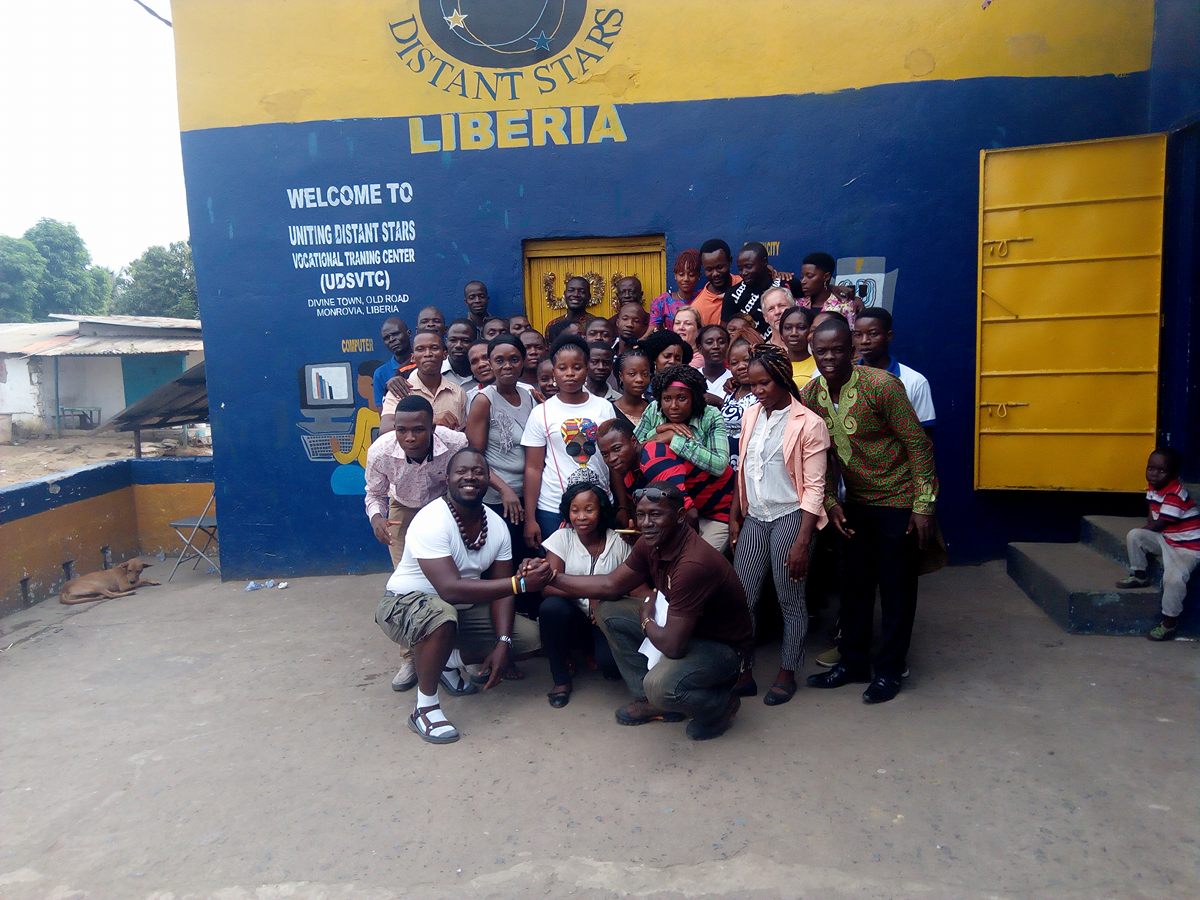Happy New Year! 2019 began on a high note with the Permaculture Design Certification (PDC) training starting on January 7. This training equips people with the knowledge and skills needed to implement a project for food security. First, the PDC training teaches our students about available resources–organic material and soil–to use for sustainable living. Second, PDC offers mostly applied knowledge similar to our vocational training courses. Lastly, this training gives our students the opportunity to work together and learn better approaches to gardening and farming.
Without a doubt, this course piqued the interest of all our students. Initially, the course limit was 35. However, this number increased to 45, including two agricultural students from the University of Liberia.
To illustrate the value of this course, the rest of this article will summarize the first five days with photos and explanation of each day’s assignments.
Day 1 – Introductions & Over of Permaculture Concepts
Our guests from Sierra Leone Foundation of New Democracy (SLFND) arrived Sunday night. After a night’s sleep in the hotel next door, they started the training on Monday. 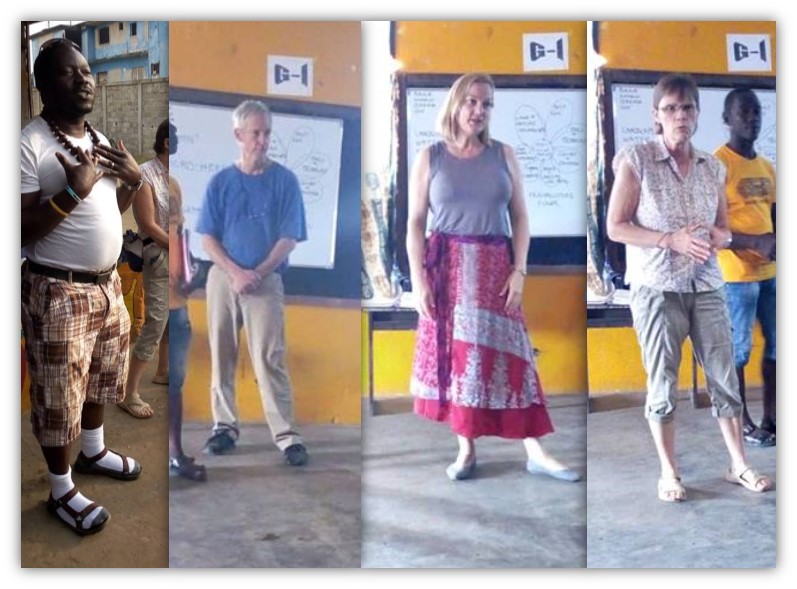 SLFND Team (left to right): Hindolo Pokawa (Founder & Executive Director), Bruce Blair (Board Member & PDC Trainer), Joy Alizadeh (Board Member & Development Director), & Brenda Blair (Early Childhood Development).
SLFND Team (left to right): Hindolo Pokawa (Founder & Executive Director), Bruce Blair (Board Member & PDC Trainer), Joy Alizadeh (Board Member & Development Director), & Brenda Blair (Early Childhood Development).
Bruce Blair spent the day showing slides of his gardens and chickens at his home in Red Wing, Minnesota. Additionally, he introduced many of the concepts they would be learning and applying during this 9-day course. 
Top Photo: Bruce teaching our youth about permaculture concepts. UDS Co-Founder & Director, Kelvin Fomba, helps explain anything that our youth don’t understand. Bottom Photo: Bruce drew a timeline for our students to write information about Liberia’s agricultural history.
Day 2 – Group Photos & Land/Soil Observations
This was Hindolo and Brenda’s last day in Liberia so everyone gathered for group photos. Furthermore, they took photos with our catering and hotel management students. The catering students prepared and cooked their food daily while the hotel management students cleaned their rooms, made beds, and washed and ironed their clothes. As you can see, the smiles on our guests’ faces show they are being well taken care of.
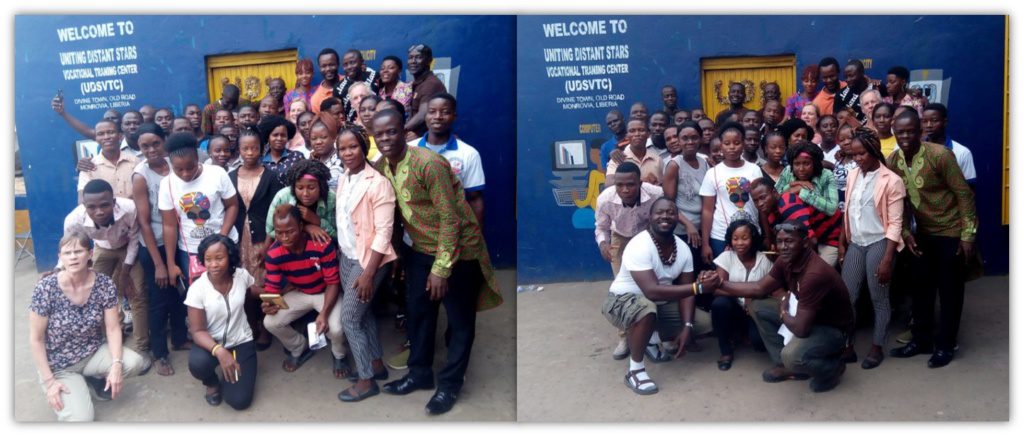
Left photo includes Brenda Blair. Right photo includes Hindolo Pokawa showing brotherly love to Kelvin Fomba.
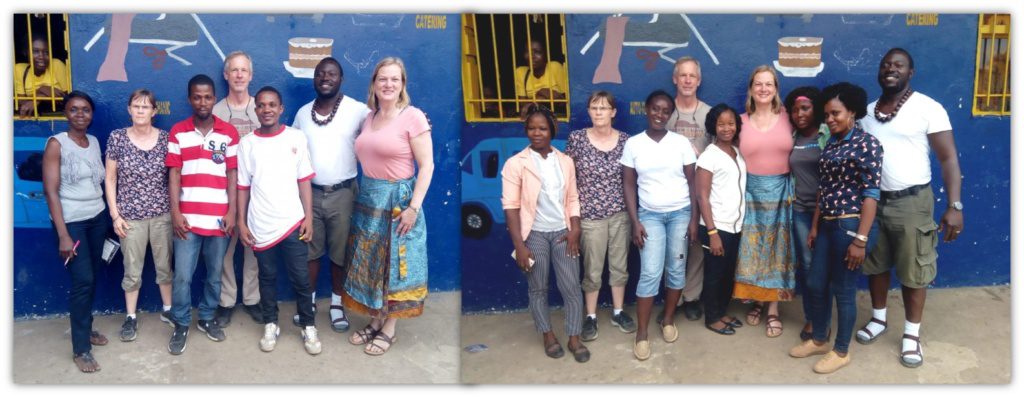
Left photo shows our catering student with their guests. Right photo shows our hotel management students with their guests.
Bruce took the students to the field site and explained how to look for patterns in the soil. Next, he assigned the students to walk the site for 45 minutes without talking and to make any observations. Then, they returned to the classroom and wrote their observations on the board.
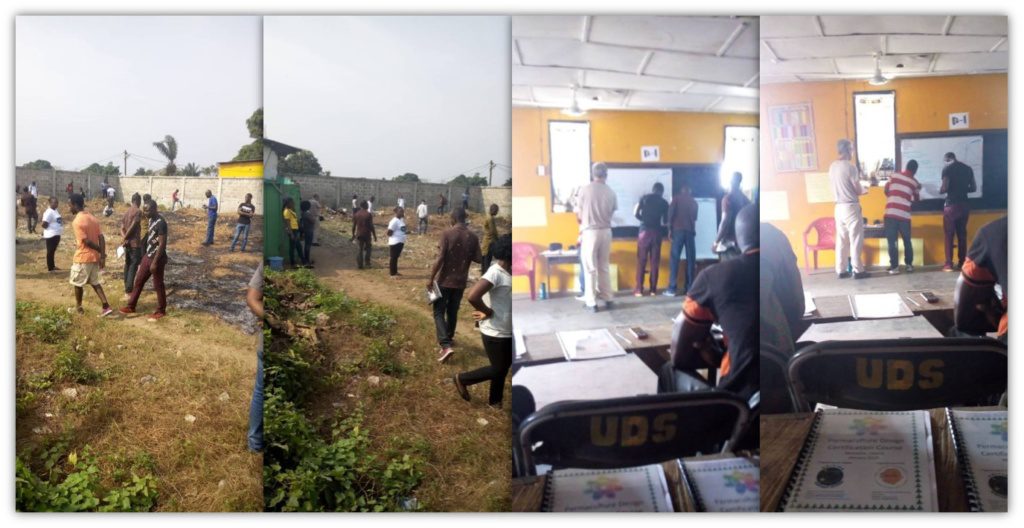
From left to right: students walking the site in silence while observing the area for patterns. Then the students wrote their observations on the board.
Day 3 – Hot Composting
Our students learned about hot composting and built their own heap with branches, leaves, and other organic materials. Hot composting is different from cold composting (the most common one used). Although both processes breakdown the organic matter, hot composting does in days instead of months and kills the weed seeds and pathogens. Plus, it breaks it down into finer material.
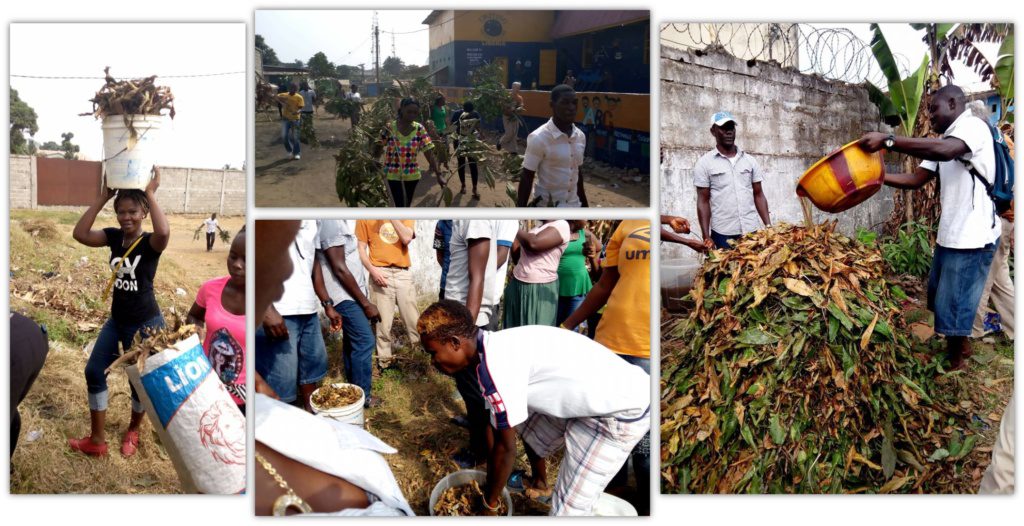
Photos (starting left, clockwise): The students gathered organic material and brought it to the site. The students piled the material into a hot compost heap.
Day 4 – Hugelkulture
Our students continued to apply knowledge at the field site. For instance, they built a Hugelkulture which is a no-till raised bed for growing vegetables. They gathered leaves and branches, placed them on the ground, and then topped with soil and seeds. Because of this process, the bed retains moisture for longer periods and gives a constant supply of nutrients.
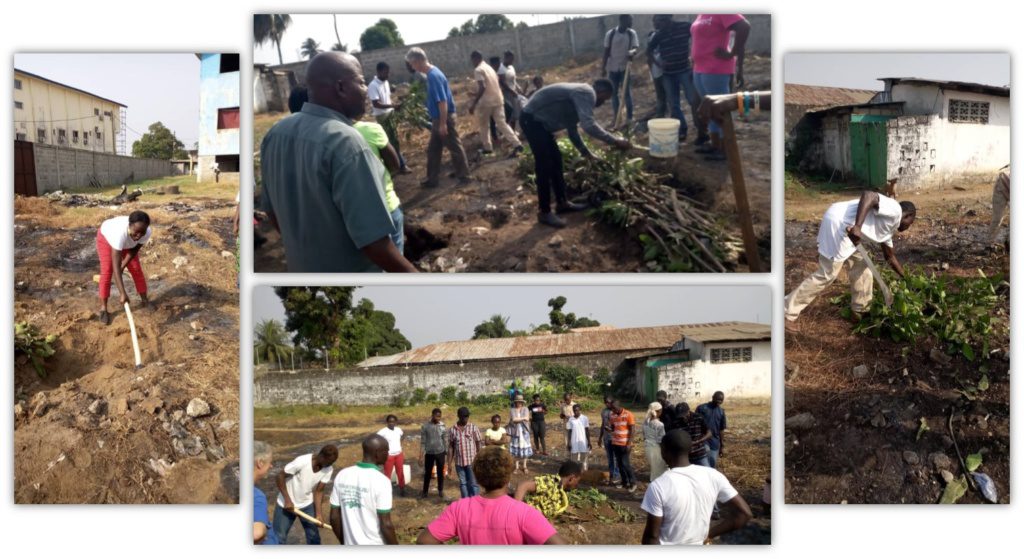
Photos (Starting left, clockwise): The students working together to build a Hugelkultur (raised bed).
Day 5 – Designs & Patterns
On Friday, Bruce explained and demonstrated the design process. He built a prototype of a layout, including where to place trees and gardens in conjunction with roads.
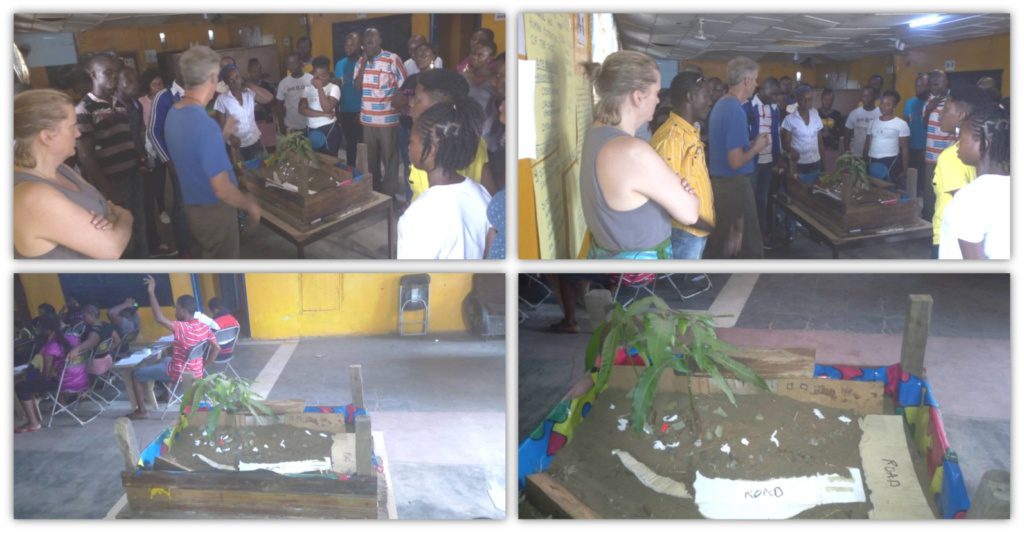
Photos: Bruce explaining and demonstrating how to design a permaculture site. This example is a garden that could be planned for a city or rural area.
As you can see, our students gained some valuable information about using the earth’s resources to better their lives and communities. Next week, we will share the last four days of the training and how our students will apply this in their everyday lives.
Thank you again for our sponsors–Ali, John, Edward, and Joel–for allowing our youth to receive this wonderful opportunity!

